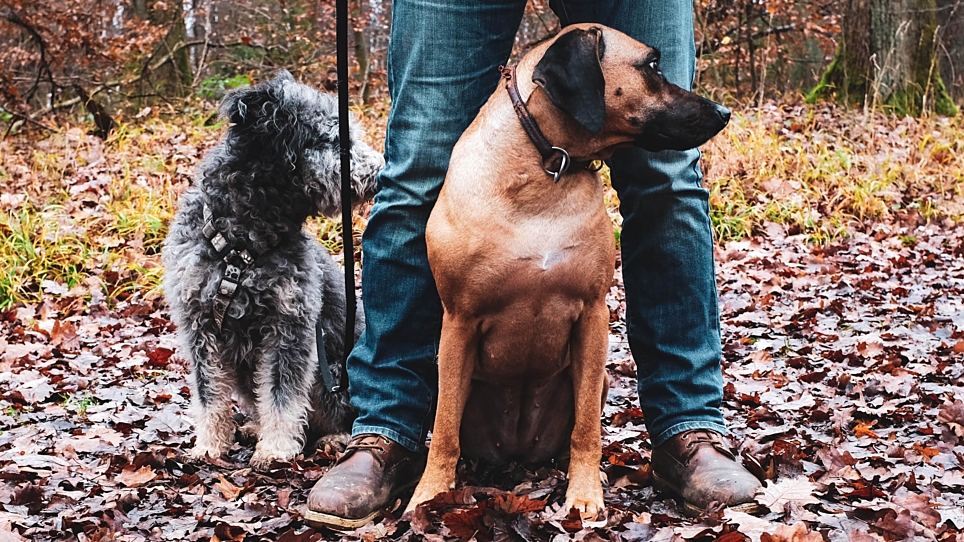Training your dog is a great way to bond with them. Plus, you get the added benefit of your dog learning a new behaviour.
Whether they're learning to greet people gently or doing some cool new tricks, training exercises with your dog will bring you both closer together.
What are the benefits of training my dog?
- You can control your dog and help keep them safe
- You can change unwanted behaviours and reinforce desired ones
- You'll be more in-tune with your dog's feelings
- You and your dog will build a stronger relationship
- You'll keep your dog's brain busy and stave off boredom
- Your dog will be the life of the party when they show off their fun tricks
What is positive reinforcement training?
Positive reinforcement training is teaching your dog to do an action to get a reward.
You can mould or change behaviour by rewarding the behaviour you want from your dog and ignoring (not rewarding or acknowledging) the behaviour you wish to discourage or change. Dogs don't know what is right and wrong – they only know what is favourable to do. This is why reward-based training methods work so well.
Rewards can come in the form of verbal praise, pats, treats, walks, ball games and toys. The rewards for your dog must be something they enjoy.
Use your chosen treat or toy when you're training, and reward your dog every time they do the action or behaviour you desire. Your dog will want to get the treat again, so they'll continue doing whatever behaviour wins them a yummy reward.
TIP: Be sure to keep rewards in your pocket whenever you and your dog go out into the world so that you'll be ready to reward your dog.
Punishment based training methods often cause your dog discomfort, fear and pain. These methods won't form a strong relationship between you and your dog. Instead, your dog may learn to fear you. Dogs trained using punishment methods are also more likely to respond aggressively when stressed.
Five common reasons dogs make mistakes
- Lack of understanding: your dog doesn't understand what they need to do to get their reward. Try making your command simpler, and ensure you're rewarding at the right time, so your dog doesn't get confused. E.g. if you're teaching 'sit', reward your dog the moment that their bottom is on the ground, don't call them over to you to get their reward.
- Lack of reinforcement/motivation: the reward isn't high-value enough. Maybe the treat doesn't smell delicious, the toy isn't their favourite, or there's something better getting their attention. Try changing rewards until you find something that they love and train in low-distraction areas.
- Lack of relationship between handler and dog: your dog needs to trust you. If they're scared, unsure or uncomfortable, your dog will find it harder to do the behaviour you're asking.
- Lack of boundaries: during training, your dog needs to know that the only way they'll get the reward is by doing what's asked of them. If you reward your dog regardless of their behaviour, you risk them learning the wrong lessons.
- Physical: your dog can't physically do what you're asking. Maybe they've got an injury you don't know about, or perhaps the trick is simply too hard. Try asking for something different that you know they can do.
When should you train your dog?
Always! Whether you're teaching a new behaviour or reinforcing one they already know – every day is a good day for training your pooch.
When you're first starting your training journey we recommend finding a positive reinforcement dog trainer to help you. They'll have lots of tips to help you and your dog.
